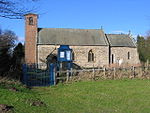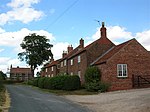Full Sutton Airfield
Airports in EnglandAirports in YorkshireTransport in the East Riding of YorkshireUse British English from May 2013

Full Sutton Airfield (ICAO: EGNU) is an unlicensed aerodrome located 8 nautical miles (15 km; 9.2 mi) east of York in the East Riding of Yorkshire, England. It is located adjacent to, and south-east of, Full Sutton Prison.The Airfield occupies the location of the former RAF station Full Sutton. It previously held a CAA Ordinary Licence that allowed flights for the public transport of passengers, or for flying instruction as authorised by the licensee, Full Sutton Flying Centre Limited. This licence was given up in 2011. The airfield is not licensed for night use.
Excerpt from the Wikipedia article Full Sutton Airfield (License: CC BY-SA 3.0, Authors, Images).Full Sutton Airfield
Woodland Walk,
Geographical coordinates (GPS) Address External links Nearby Places Show on map
Geographical coordinates (GPS)
| Latitude | Longitude |
|---|---|
| N 53.980555555556 ° | E -0.86472222222222 ° |
Address
Full Sutton Flying Centre
Woodland Walk
YO41 1NX , Full Sutton
England, United Kingdom
Open on Google Maps








